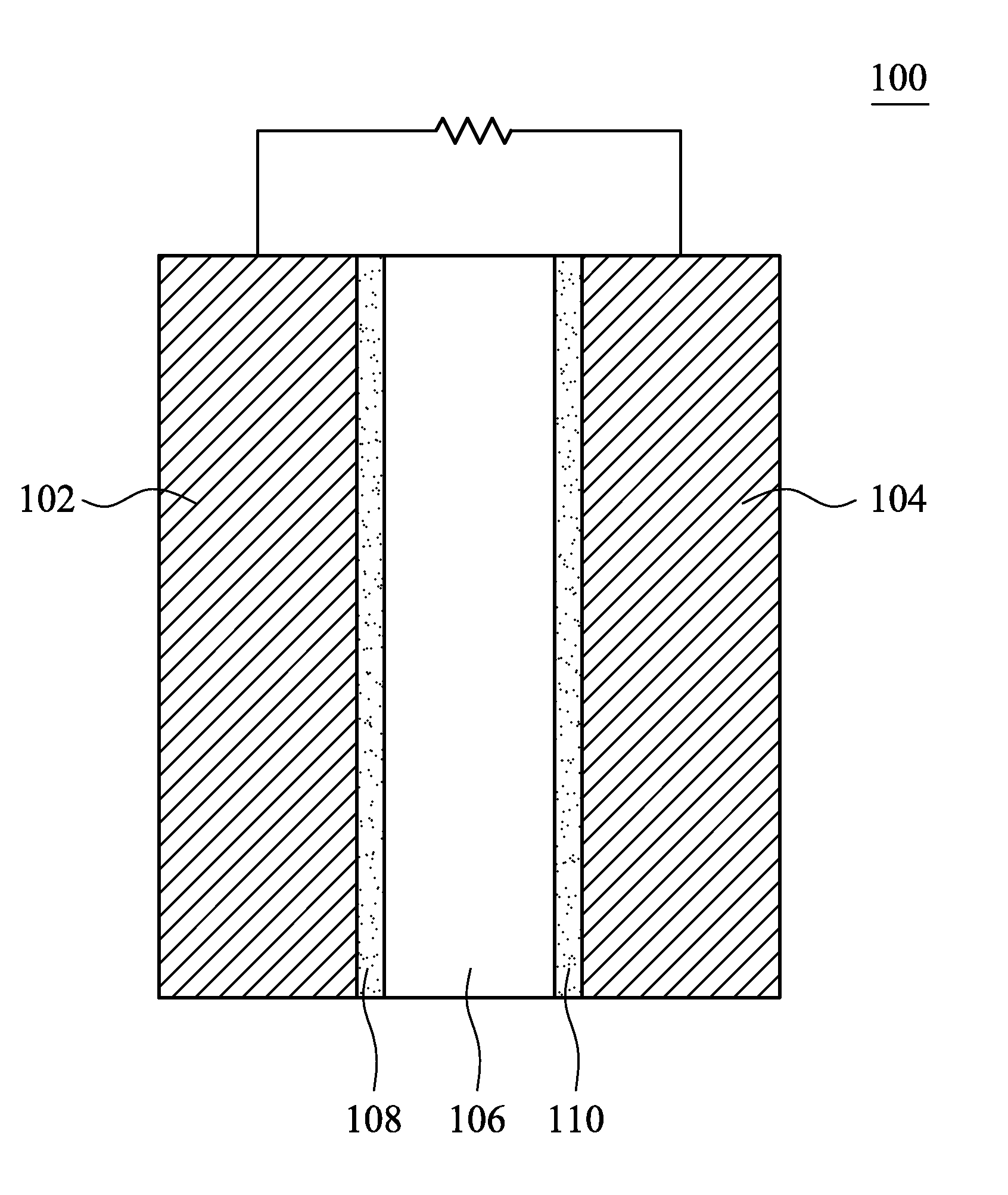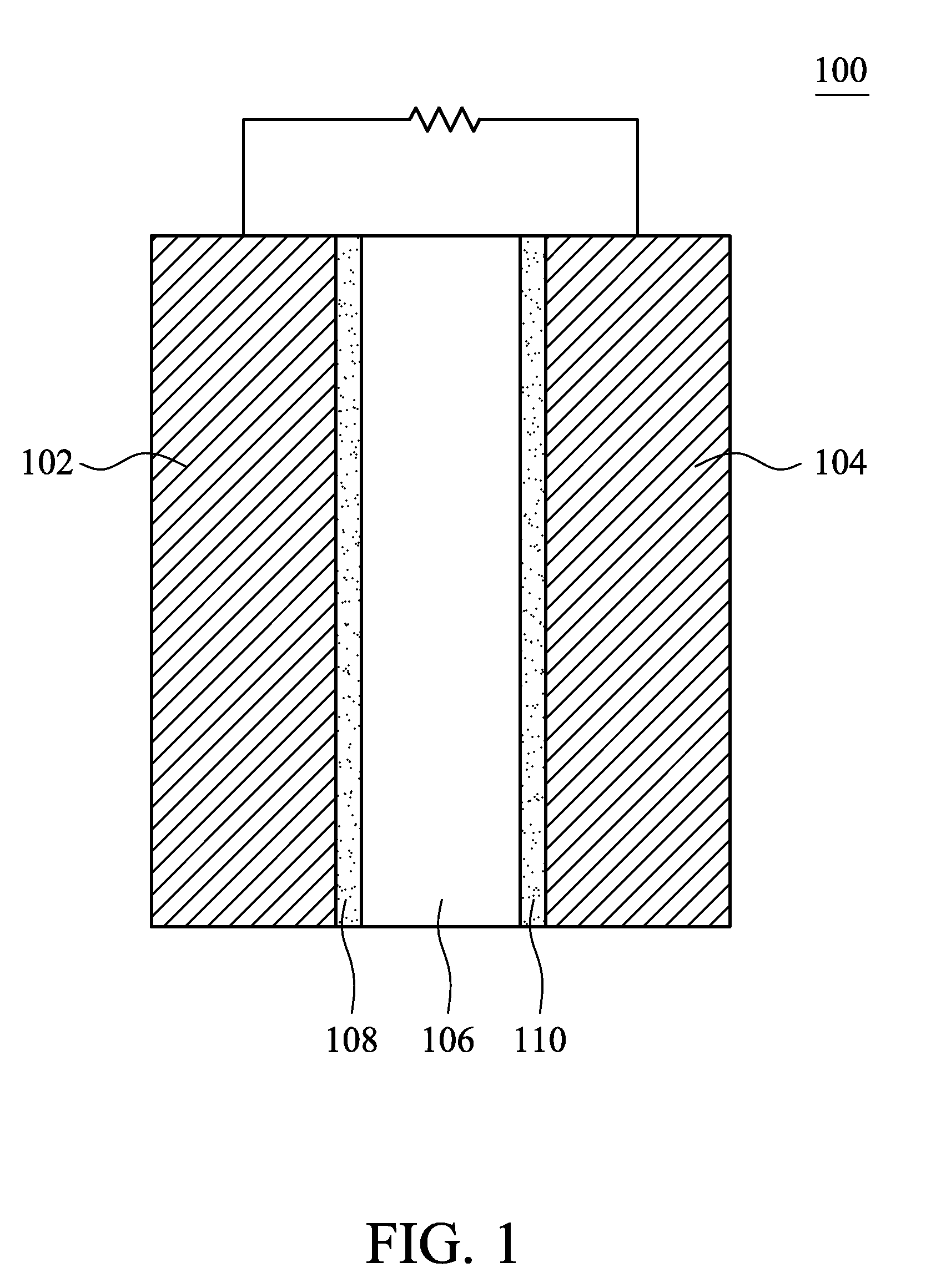Fuel cell and electrocatalyst
a fuel cell and electrocatalyst technology, applied in the field of electrocatalysts, can solve the problems of unsatisfactory catalytic performance of ptru anode catalyst and pt cathode catalyst, reducing the catalytic activity of pt catalyst with methanol, and still having disadvantages
- Summary
- Abstract
- Description
- Claims
- Application Information
AI Technical Summary
Benefits of technology
Problems solved by technology
Method used
Image
Examples
examples 1-4
Synthesis of Cathode Electrode Catalysts
[0025]Ketjen Black ECP300 was used as the catalyst carrier and was dispersed into ethylene glycol. Precursors including PdCl2, Co(NO3)2.6H2O, (NH4)6W12O39.xH2O (Ammonium tungsten oxide hydrate), and NaH2PO2.H2O were weighted (according to Table 1) and dissolved in an NaCl aqueous solution to form an aqueous metal salt solution. The aqueous metal salt solution was added into the ethylene glycol containing the carrier and uniformly dispersed. Then, the solution was stirred by a stirrer and refluxed for 2 hours at 150° C., such that the metal salts were reduced to metal nanoparticles and adsorbed onto the carrier. The temperature of the solution was then lowered to room temperature. The solution was then filtered, and the filter cake was washed with water, resulting in the cathode electrode catalyst of example 1, wherein the atomic ratio of Pd:Co:W:P was 68:15:10:7.
[0026]The cathode electrode catalysts of examples 2-4 were also formed by the meth...
example 5
Calcination of Cathode Electrode Catalysts
[0028]The sample of example 1 was calcined for 2 hours at 500° C. in a reducing atmosphere to obtain the catalyst of example 5. In addition, comparative examples 3-5 were also prepared.
examples 6-8
Synthesis of Anode Electrode Catalysts
[0034]The same procedure as in example 1 was repeated in example 6 PtRuWP except that the atomic ratio listed in table 7 was used, wherein Ketjen Black ECP300 was used as the carrier and H2PtCl6.6H20, RuCl3, (NH4)6W12O39.xH2O, and NaH9PO2.H2O were weighted as precursors according to the ratio in table 7. In addition, catalysts of example 7 (PtRuAuP) and example 8 (PtRuCuP) were also synthesized by using HAuCl4.3H2O and CuCl2.2H2O to replace (NH4)6W12O39.xH2O of example 6. Table 7 illustrates the activity of the four-element cathode electrode catalysts, wherein all of the four-element anode electrode catalysts achieved good catalytic activity toward methanol oxidation reaction.
TABLE 7Methanol oxidation reaction catalytic activity of anode electrode catalysts(40° C., 5M CH3OH + 0.5M H2SO4)LoadingActivity atActivity atamount0.35 VActivity at0.45 VSample(wt %)CompositionRatio (at %)(A / g)0.4 V (A / g)(A / g)Example 672PtRuWPPt:Ru:W:P =6.622.067.046:46:1:...
PUM
| Property | Measurement | Unit |
|---|---|---|
| temperature | aaaaa | aaaaa |
| surface area | aaaaa | aaaaa |
| energy density | aaaaa | aaaaa |
Abstract
Description
Claims
Application Information
 Login to View More
Login to View More - R&D
- Intellectual Property
- Life Sciences
- Materials
- Tech Scout
- Unparalleled Data Quality
- Higher Quality Content
- 60% Fewer Hallucinations
Browse by: Latest US Patents, China's latest patents, Technical Efficacy Thesaurus, Application Domain, Technology Topic, Popular Technical Reports.
© 2025 PatSnap. All rights reserved.Legal|Privacy policy|Modern Slavery Act Transparency Statement|Sitemap|About US| Contact US: help@patsnap.com


